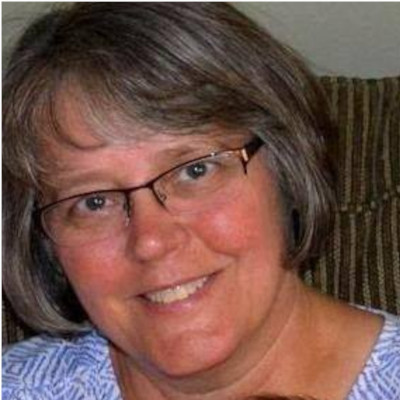< Newbery Medal and Honor Books
Given the Newbery Award's prestige it would be easy to assume that the award winners are all excellent books for children. The Biblioguides Team has not found this to be the case. We always want to provide parents with the information they need to make the best book decisions for their families. With that goal in mind, we've put together a complete list of all medal winners and honor books since inception, and the Biblioguides Review Team is working together to read our way through the winners and to provide a review. Where we have not yet reviewed a book, a description directly from the dust jacket or from the publisher has been provided. In some cases, we have shared a brief synopsis from The Newbery and Caldecott Awards: A Guide to the Medal and Honor Books (1999).
Reviews are the thoughts and opinions of the particular reviewer and do not necessarily represent all members of the team. Reviews will continue to be added as the team reads more of the Newbery books. We hope this list will help you familiarize yourself with the various winners and provide the necessary information to determine which books would be a good fit for your family!
Miss Hickory
By: Carolyn Sherwin Bailey
Illustrated by: Ruth Gannett
Medal Winner
NOT REVIEWED
When Great-granny Brown packed up and moved to the Women's City Club in Boston, Miss Hickory was faced with the problem of spending a severe New Hampshire winter alone. This might not have been so bad if Miss Hickory had not been a country woman whose body was an apple-wood twig and whose head was a hickory nut. Also, if her house had been built of stronger material than corncobs, however neatly notched and glued together.
This is the story of how she survived those trying months, in the company of neighbors like Crow, who was tough, wise, and kindly; Bull Frog, who lost his winter clothes; Ground Hog, a surly man afraid of his own shadow, and a host of others. It is a fantasy full of the peculiar charm of the New Hampshire countryside, seen from an angle which most of us, city-bound in the winter, know little about.
From the dust jacket
The Avion My Uncle Flew
By: Cyrus Fisher
Illustrated by: Richard Floethe
Honor
Reviewed by: Sara Masarik
Recommended age: 8-14
Also read and recommended by: Diane Pendergraft, Sandy Hall
During WWII, twelve-year-old Johnny Littlehorn and his mother tried to keep their Wyoming ranch afloat while his father was away fighting in the war. When the story opens, Johnny has had an accident which resulted in a badly broken leg that needs the attention of a specialist. When his father returns home soon after, the family decides to spend the summer in Europe. Johnny’s mother is originally from France and Johnny’s father is still in active military duty serving as a bi-lingual (French and English) coordinator of the rebuilding efforts. In France, Johnny can see a world-renowned orthopedic specialist attached to the military, he can meet his French uncle, and he can see where his mother is from. Everyone loves this plan except for Johnny.
It has been my experience that boys love to know how things work. Whether it is how an airplane is made or how French is spoken, I think boys will enjoy this story. I recommend this as a free-read (or a pleasure read), a book for a vacation, or a book to delightfully expose readers to post-war France and the after effects of German occupation. I think this book fits nicely in the 8-14-year-old range and, I, a girl, enjoyed it too.
Big Tree
By: Mary and Conrad Buff
Illustrated by: Conrad Buff
Honor
Reviewed by: Sandy Hall
Similar in literary style to Holling Clancy Holling's books like Seabird or Minn of the Mississippi, Mary and Conrad Buff tell the story of a giant Sequoia tree named Wa-Wo-Na. The tree is personified and described as history passes it by. "And yet, he stands patiently and quietly on the edge of Fallen Log Meadow, as if nothing had ever happened to him. He is not discouraged. He is serene, for he thinks in centuries of time" (page 9). The lives of chipmunks and squirrels which live in this tree are described. The challenge of Young Buck over Old Buck takes place in Wa-Wo-Na's shadow. Time heals the wounds of a destructive forest fire, and the Sequoia lives on. In more recent history, the sound of axes and falling trees is heard. Will Wa-Wo-Na survive this new threat?

The Heavenly Tenants
By: William Maxwell
Illustrated by: Ilonka Karasz
Honor
NOT REVIEWED
Mr. and Mrs. Marvell and their four children live on a farm in Wisconsin. Mr. Marvell has a great curiosity about the universe, and the stars particularly, and pays more attention to the comings and goings of Orion and the Big Dipper than he does to those of his earthly neighbors. One spring night he tells the children about the constellation of the zodiac.
Next day the Marvells start off on a visit to the children's grandmother in Virginia, leaving the care of August, the hired man. But August, not a very dependable character, fails to come. That same night the neighborhood is aroused by a light that is like unusually bright starlight, only much, much brighter. It comes from the Marvells' farm, and the countryside turns out to see what causes it. Every board, every windowpane, every shingle, brick, and stone of the Marvells' house is shining. Since there is apparently nothing wrong and the light returns night after night, the farmers get used to it. But August, coming at last to investigate, has an extraordinary experience. And strange and delightful things happen to the Marvels when they get home.
This story, of a family whose lives become involved with the characters of the zodiac, has a special quality—half fantasy and half humorous realism—that both adults and children will appreciate.
Ilonka Karasz, artist and designer of note, has done a beautiful full-color jacket, three double page-page illustrations in midnight blue, and many charming black and white spot drawings throughout the book.
From the dust jacket
The Hidden Treasure of Glaston
By: Eleanor Jewett
Illustrated by: Frederick T. Chapman
Honor
NOT REVIEWED
This is a glowing, intimate story of medieval England, absorbing for all who love adventure, beauty, authentic details of the period, and, above all, books themselves.
Young Hugh, a cripple with a love of ancient manuscripts inherited from his dead mother, is left by his mysterious father one stormy night in the sanctuary of the great Abbey of Glastonbury. Assisted by the good Brother John, librarian of the monastery, by his delightful friend, Dickon, and by the half-crazy songs and stories of a strange hermit, Hugh pieces together clues from partly destroyed documents which lead him on an exciting trail to a thrilling discovery, to recovered health, and to a glimpse of the Holy Grail itself.
Fully illustrated in a manner that rounds out the perfect feeling for the period provided by the text, this is a book for quiet summer hours, or for reading by the fireside with the curtains snugly drawn against the storm of winter.
From the dust jacket
The Wonderful Year
By: Nancy Barnes
Illustrated by: Kate Seredy
Honor
Reviewed by: Sherry Early
Recommended age: 12+
Also read and recommended by: Sandy Hall
A realistic, turn of the century setting story, published in 1946, about an only child, Ellen, who travels from Kansas to Colorado with her lawyer father and her adventurous mother to start a fruit-growing farm. The family is also in search of a rest cure and healthy situation for Father, who has been prescribed fresh air and exercise to alleviate the pain in his neck. Ellen, who is a worrier like her father, is reluctant to leave her friends in Kansas, but Mother is excited about the the new venture and soon talks Ellen into joining in her eager anticipation.
The pace and atmosphere of the story is reminiscent of Ruth Sawyer’s Roller Skates or of the Betsy books by Maud Hart Lovelace, especially the older Betsy books in which Betsy goes to middle school and high school. Ellen is eleven as the story begins, and she has her twelfth birthday near the end of the book, but as only children tend to be, she’s somewhat mature for her age. One of the themes of the novel is about growing up and staying a child and not growing up too fast nor being too impatient to leave one’s childhood behind. Ellen makes friends with a fifteen year old boy, Ronnie, who lives nearby, and there is some understated tension about whether the two can remain friends and comrades in adventure when Ronnie is so much older and interested in girls his own age while still enjoying Ellen’s company as a friend. The interpersonal give and take is very well written, and I would love for my early teen and pre-teen girls to read the story and then discuss the possibilities that are suggested about boys and girls being friends and not having to get jealous of one another or have crushes.
Read full review








